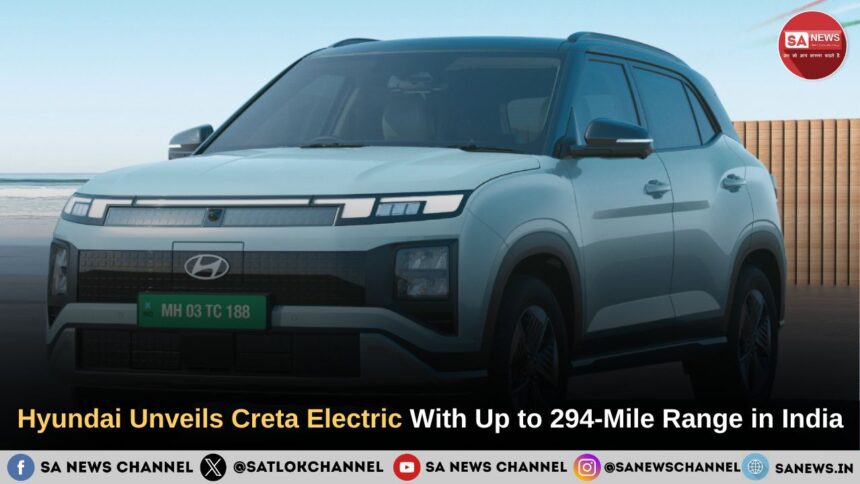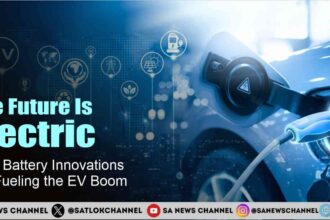Hyundai has expanded its popular Creta lineup in the Indian market with a fully electric variant, set to compete against a growing field of EVs. Dubbed the Hyundai Creta Electric, the new SUV introduces two battery options, offers brisk performance, and features a subtly reworked design that sets it apart from its petrol- and diesel-powered siblings. The official unveiling is planned for January 17 at the Bharat Mobility Show, though Hyundai hasn’t yet confirmed any launch timeline or export plans for international markets.
Two Battery Options, Impressive Range
One of the Creta Electric’s primary draws is its choice of two battery packs:
- A 42 kWh battery, delivering 242 miles (390 km) of range.
- A larger 51.4 kWh battery, pushing range to 294 miles (473 km) under ARAI test protocols.
Charging options add versatility. A DC fast charger can top up the battery from 10% to 80% in 58 minutes, while a standard 11 kW AC wallbox can achieve a 10–100% charge in about 4 hours. The SUV also comes with a small frunk, offering convenient storage for charging cables and other small items. Notably, the charging port is hidden behind the Hyundai emblem in the grille area.
Hyundai hasn’t provided detailed horsepower or torque figures, but it has revealed that the single electric motor setup provides enough punch to get from 0–62 mph in 7.9 seconds, making it quicker than the ICE-powered Creta N Line. That performance, paired with a top-notch electric range, underscores Hyundai’s ambition to capture a chunk of India’s EV market.
Modernized Design and Tech
While the Creta Electric largely retains the familiar silhouette of its internal-combustion counterpart, it does incorporate some distinct aesthetic changes:
- Front Fascia: A fully blocked, pixelated grille highlights its EV identity, complemented by lower bumper air flaps for active aero.
- Rear Bumper: A pixel-like pattern above the aluminum-style skid plate lends a cohesive look.
- Wheels: Aero-optimized 17-inch alloys aim to reduce drag and improve efficiency.
In the cabin, the Creta Electric adopts a new steering wheel—reportedly adapted from the Ioniq 5—along with a gear selector knob on the center console for a modern twist. Dual 10.25-inch digital displays (instrument cluster and infotainment) feature updated graphics tailored to the EV powertrain. Additionally, Hyundai has equipped the SUV with a Vehicle-to-Load (V2L) function, allowing drivers to power electronic devices using the vehicle’s battery.
Positioned Against Rising EV Competition
The Creta Electric joins a market that’s fast embracing electrification. Rivals include the Suzuki eVitara, Mahindra BE 6, and Tata Curvv EV—all targeted at buyers seeking a spacious, technology-forward electric crossover. While Hyundai hasn’t yet disclosed pricing, local media speculate the Creta Electric could sit slightly above the top-tier ICE variants, factoring in the cost of batteries and advanced EV components.
Also Read: Trends of Automobile Industries in India
India’s high-volume SUV segment has been key to Hyundai’s success, with the ICE-powered Creta already a favorite among urban drivers. By introducing an electric option, Hyundai hopes to remain at the forefront of evolving consumer preferences—particularly important given the central government’s push for cleaner transportation solutions.
What’s Next?
Hyundai will formally showcase the Creta Electric at the Bharat Mobility Show on January 17, providing additional details on trim levels and possibly announcing a launch date. If the model performs well locally, there is speculation it could be exported to other emerging EV markets, but Hyundai has not yet confirmed global expansion plans.
For now, the Creta Electric signals the automaker’s commitment to growing its EV footprint beyond dedicated electric models like the Kona Electric and Ioniq series. With promising range numbers, quick-charging capabilities, and a known brand name, the Creta Electric could be well-positioned to draw in Indian buyers seeking a practical yet future-forward SUV.









